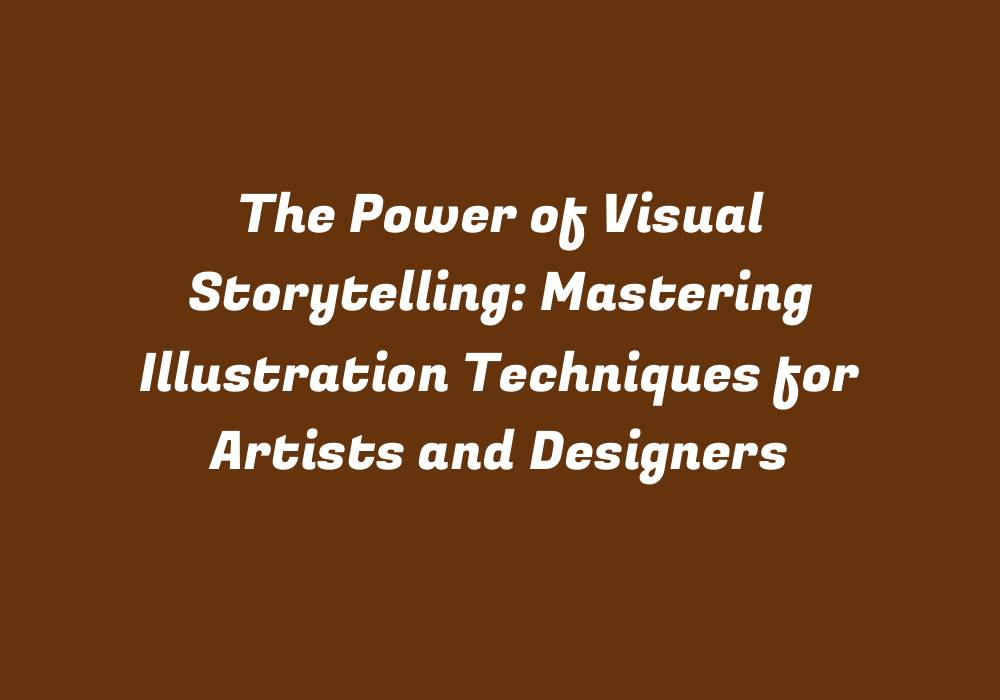The Power of Visual Storytelling: Mastering Illustration Techniques for Artists and Designers
Introduction
Visual storytelling is a powerful method to communicate ideas, evoke emotions, and create unforgettable experiences. As an essential part of illustration, it plays a significant role in the art world and is becoming more prevalent in various creative disciplines, such as design, animation, and filmmaking. This article will discuss the significance of visual storytelling techniques for artists and designers, along with practical advice on enhancing their skills and mastering various illustration methods.
Understanding Visual Storytelling
Visual storytelling is an art form that uses images to convey a narrative in a way that resonates with the audience’s feelings, thoughts, or experiences. It involves combining visual elements like shapes, lines, colors, textures, and composition to create a compelling and cohesive story. This process often incorporates illustration techniques, which are essential for creating vivid, immersive environments and engaging characters that bring stories to life.
Role of Illustrators in Visual Storytelling
Illustrators play a critical role in visual storytelling by creating unique art pieces that convey the essence of a narrative. They are responsible for interpreting and translating the story’s theme, mood, and atmosphere into engaging illustrations that resonate with audiences. With their skills, they can evoke emotions, create atmospheres, and communicate ideas visually in ways that would be difficult through words alone.
Mastering Illustration Techniques
To become a master visual storyteller, artists and designers must acquire proficiency in various illustration techniques. Here are some crucial ones to consider:
1. Sketching: Start with loose sketches to experiment with different compositions, character designs, and perspectives without the pressure of perfection. This will help you refine your ideas and develop a clear visual direction.
2. Digital illustration tools: Familiarize yourself with various digital illustration tools like Adobe Photoshop or Illustrator, which offer numerous features and shortcuts for creating professional artwork. Learn how to use layers, custom brushes, and other essential functions to enhance your workflow.
3. Line art: Practice drawing simple line art using pen and paper or digital tools. Master the art of using lines to depict emotions, actions, and storytelling elements in minimalist illustrations.
4. Color theory: Understanding color theory is crucial for visual storytellers as it helps them create harmonious and evocative imagery. Experiment with different color schemes to explore how they affect the mood and message of an artwork.
5. Composition and layout: Learn the fundamentals of composition, including the rule of thirds, symmetry, and the Golden Ratio, to arrange elements effectively within a frame.
6. Perspective: Understand various types of perspective like one-, two-, or three-point perspectives to create realistic environments and immersive storytelling experiences.
7. Character design: Develop unique character designs that convey emotions, personalities, and motivations. Explore different facial expressions, body language, and clothing styles that help bring your characters to life and engage the audience with their stories.
8. Storyboarding: Learn how to create storyboards to visualize a narrative’s structure and progression. This is an essential step in ensuring a smooth flow of events throughout a story and making it easier to identify gaps or inconsistencies.
9. Visual language: Master the use of symbols, metaphors, and visual elements to convey abstract ideas effectively and efficiently. This skill enables you to communicate complex ideas and stories using simple yet powerful imagery.
10. Emotional storytelling: Tap into your audience’s emotions by exploring different emotional states and creating art that resonates with viewers on an emotional level. Learn how to use visual cues, color choices, and character expressions to evoke specific emotions within your artwork.
Conclusion
Visual storytelling has become a fundamental aspect of the creative world due to its unique ability to transcend language barriers and communicate ideas in powerful ways. By mastering various illustration techniques, artists and designers can enhance their skills in this field and create impactful visual narratives that captivate audiences’ attention and emotions. As you continue to explore and improve your craft, the power of visual storytelling will undoubtedly become an essential part of your artistic journey.
